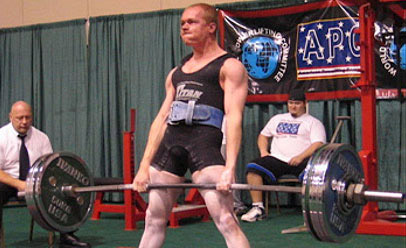“I’M GETTING STRONGER BUT NOT BIGGER!” (STRENGTH GAINS WITHOUT MASS)

“Sean, I’m getting stronger, but not bigger!”
So you’ve been hitting the gym consistently every week for at least the past couple months… you’re putting in the work and training hard… you’re even adding more weight to the bar on your exercises at a decent rate (also called progressive overload)…
There’s just one problem: you don’t have any noticeable gains in muscle size to show for it.
This is a very common question I receive, and you’re definitely not alone.
Yes, it’s perfectly possible to make noteworthy gains in strength without any real size gains to go along with it.
See, in simple terms, your body can produce gains in strength in two primary ways…
The first is through muscular hypertrophy, or growth. This refers to an actual increase in the cross-sectional area of the muscle itself. If you’re trying to pack on muscle size, this is obviously what you’re after.
The second is through neural adaptations. In this case, the body becomes more efficient at recruiting motor units and making use of the muscle mass that you already have. If you’ve been gaining strength without the size, this is the primary adaptation you’ve been experiencing.
While it’s possible that this is happening as a result of an improperly structured workout plan, it’s not very likely that this is the case.
If you’re already making consistent gains in strength in the gym, you’d have to be making some pretty basic errors in your training structure in order for this to be the root of the problem.
Here are a few possible, but unlikely scenarios…
You’re mostly performing sets of about 3 reps or less – This would primarily result in gains in strength/power rather than hypertrophy.
You’re mostly performing sets of above 12 reps – This would primarily result in increases in endurance rather than hypertrophy.
You’re only performing a couple sets per muscle group per workout – This would prevent you from creating enough overall metabolic fatigue in the muscle to produce significant size gains.
You’re training each muscle group less than once every 10 days or so – You could still produce size gains this way, but it would be a much more gradual process.
You aren’t training all of your muscle groups equally – If all you’re doing is going into the gym to train your “showy” muscles (like chest, biceps, and abs) the overall changes to your physique are going to be far less noticeable.
If you’re making any of these basic errors, you’ll want to fix them immediately.
Make sure that you’re sticking to a hypertrophy-based rep range anywhere between 5-12… you’re hitting each muscle group at least once a week… you’re performing multiple sets per muscle during each session… and you’re training your entire body with equal focus.
However, assuming that you already have these basic training principles in place, your lack of size gains likely has nothing to do with your actual training plan at all.
Sure, your current plan could probably be tweaked and improved, but if you’re employing all of the principles I just outlined and you’re making consistent gains in strength as well, your workout plan is already structured well enough to produce noticeable gains in muscle size.
What’s the real problem?
Simple: it’s your diet. More specifically, you’re not consuming an adequate calorie intake each day.

Remember, in order to build a significant amount of muscle, you must provide your body with a calorie surplus by consistently consuming more calories than you burn each day.
This is known as the “law of energy balance”, and without it, your gains will be dead in the water.
If you’re gaining strength without the size, chances are that you’re consuming a level of calories that is either at or right around your calorie maintenance level. You’re taking in enough for your body to maintain its current weight, but are not providing the additional excess calories needed to fuel hypertrophy gains.
It’s possible that you’re already aware of this, but if you’re simply “winging” your diet each day, there’s a good chance that you’ll still end up missing the mark.
The solution?
Find out what your calorie maintenance level is, increase it by 15-20%, and then track your intake each day to fall within the proper range.
For the very best results, you should ideally be tracking your individual macronutrient intake as well (protein, carbs and fats), but at the very least you’ll want to make sure your calorie intake is nailed down.
Total calorie intake is the primary, underlying foundation of your entire nutrition plan. If this basic principle is not being employed, you’re completely wasting your time in the gym.
How do you go about calculating this?
For the easiest option, just head over to my Free Bodybuilding Macronutrient Calculator, as this completely automates the process for you and just requires you to punch in a few basic stats about yourself.
Not only does the calculator outline your daily calorie needs, but it covers protein, carbohydrates and fats as well.
Or, if for some reason you want to calculate it manually, just check out my previous article “How Many Calories To Build Muscle Per Day”.
This one simple shift in your bodybuilding program will immediately take you from a place of complete stagnation to consistently gaining brand new muscle size every single week.
If you found this article helpful, make sure to sign up for your FREE custom fitness plan below...




